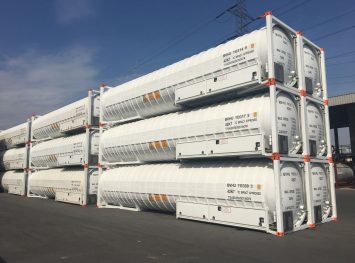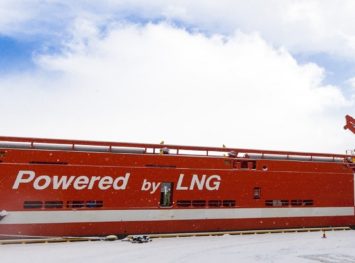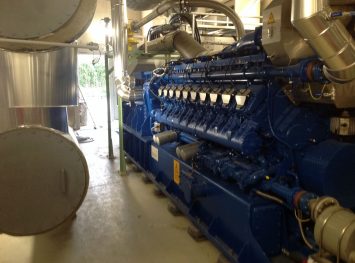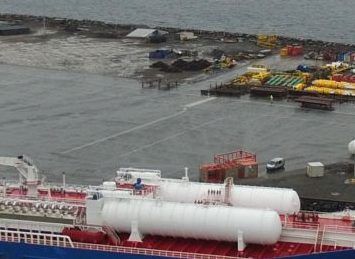LNG Peak Power Generation
Peak power generation
- The share of renewables like wind, solar, hydro and biomass in the power generation
- This is driven by tightening regulation as well as rapidly falling installation costs for renewable energy sources like wind and solar in comparison to traditional fossil means of power production like coal or gas powered turbines
- For Sweden and Germany this renewable share already approached respectively 60% and 20%
- For 2020, the whole of Europe has a target of 20% renewable
- The increasing share of renewables also poses a challenge to the stability of the power grid as prolonged periods without wind and sun (‘dunkelflaute’ in German) negatively impact the power generation capacity
- The arising temporary unbalance in generation capacity and demand is addressed by grid operators through demand response management, better interconnectors between Europe’s national power grids and an push for new storage solutions
Demand response management
- Grid operators balance power generation and demand on a continuous basis through demand response management programs
- Demand response management include all the tools of grid operators to balance power generation and demand through either increased generation capacity or reductions of demand through temporary shutdown of large (mostly industrial) consumers
- In many countries reciprocating diesel or gas engines are a key tool for fast demand response
- In the UK for example the Short Term Operating Reserve program of the National Grid includes around xxx MW of installed reciprocating engines covering around xx sites
- Typical load factors of these reciprocating engines are in the range of a 1-5% only
Lower emissions with natural gas
- Operators of reciprocating engines run their engines mostly on diesel or natural gas
- Natural gas often is the preferred fuel choice of operators if a connection to the gas grid is available
- Natural gas allows substantially lower emission levels of Sulphur, NOx, Particle Matter and CO2 at an competitive price versus diesel
- Operators that do not have access to the gas grid have currently no other option than to use diesel
LNG for reciprocating engines
- LNG offers benefits versus both diesel and natural gas from the grid
- LNG allows operators without a grid connection to switch from diesel to natural gas whilst capturing both cost savings and reducing emission levels
- Given the typical load factor of under 5%, operators with a grid connection may also find LNG cost competitive as the need for a high capacity and very costly gas connection is eliminated
Design LNG solution
- LNG is transported by road tanker or container form one of the import terminals in Europe and transferred to an on site LNG storage and regasification installation
- The LNG installation is sized to the specific load factor and consumption pattern to enable safe and efficient operation
- As LNG is a boiling cryogenic liquid a small percentage of the gas evaporates continuously leading to a pressure increase in the storage tank of around 0,1 bar per day
- The storage tanks are designed to a certain Maximum Allowable Working Pressure (MAWP) of typically 7-10 bar, resulting in a holding time of typically more than 2 months
- As demand generates a continuous outtake of the boil off gas, the actual pressure increase in the LNG tank during operation is much less.
Example calculation
- A 1 MWe engine with a load factor of 5% and an efficiency of 40% consumes approximately 1,1 GWh of natural gas per year
- Delivery lead times are usually as low as 2-3 days depending on the exact site location
- The LNG installation on site would be designed to allow for a safety stock for of around 5 days resulting in a tank size of 80 or 90 cubic meter.
- During idle time the boil off gas from the LNG in the tank would lead to a slow increase of the pressure in the tank
- To consume the boil off gas and prevent the operating pressure in the tank form rising above the MAWP, an average fuel consumption of around 0,5 MWh per day would be required within the 2 months after loading the terminal
- This would be equivalent to the engine running around 10-15 hours in those 2 months, which is equal to a load factor of roughly 1%
“”
Broadview Energy Solutions B.V.
LNG distribution strategy
Broadview aims to expand and strengthen its current position in the small scale LNG (distribution) market through organic growth of the existing portfolio companies as well as through new acquisitions and investments.
Small scale LNG portfolio
Within the LNG market, Broadview is active through its participations in Aritas Cryogenics, Barents Naturgass, Cryogenic Container Solutions and DMT Environmental Technology. Key markets for distributed LNG are off-grid industry, remote power generation and marine fuel. Distribution is done by LNG trailers as well as by 40ft ISO containers.
Why choose us
- LNG distributor in Europe by road
- Experience in industry, transport and marine
- One-stop-shop including engineering, commodity and transport
- European coverage with supplies
- Solid group also offering financing solutions




